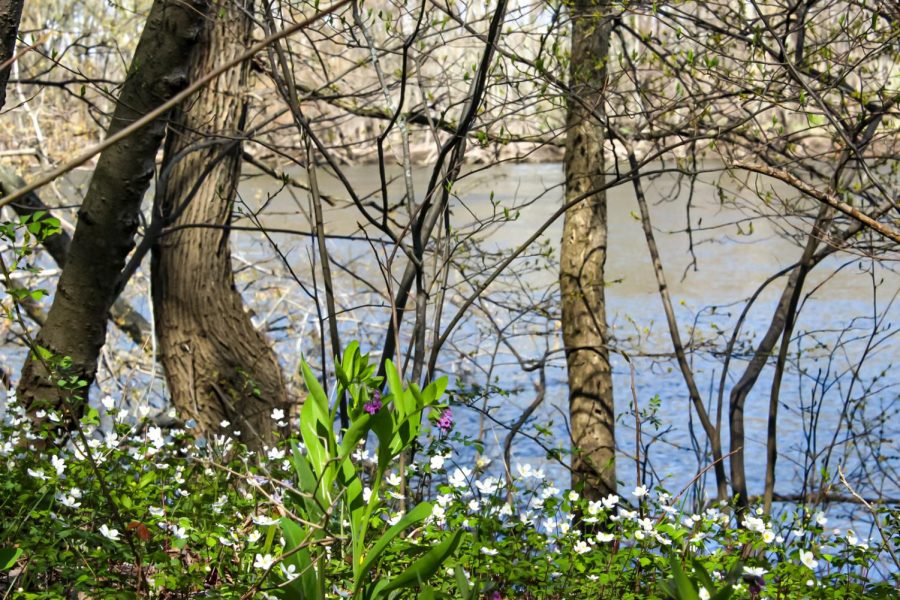GV professor believes climate change poses threats in West Michigan
Aug 1, 2022
An increase in precipitation, hotter temperatures, significant seasonal changes, more diseases and devastating storms have been witnessed around West Michigan. These are symptoms of a larger problem – climate change.
For the region Grand Valley State University calls home, it has arrived sooner rather than later.
“Climate change is happening everywhere, it’s a global phenomenon,” said Dr. Elena Lioubimtseva, professor of geography and sustainable planning at GVSU. “West Michigan is not the exception.”
Professor Lioubimtseva has researched and fought the battle against climate change for the entirety of her academic career, teaching classes at GVSU about the damage climate change has wreaked and how students can help. Her research explores the changes West Michiganders have felt over the past few years.
“The most straightforward observable impact already is changes in precipitation and changes in temperature,” Lioubimtseva said. “The climate of West Michigan for the past few years is two or three degrees Fahrenheit warmer than the middle of the 20th century.”
For Michigan industries like agriculture, the growing period will be extended from increases in temperature but with the cost of lower yields with a lot more volatility from weather phenomenon, increases in storms poses a great risk to crops.
For the average person, an increase in temperature will cost them the normalcy of Michigan’s routine seasonal transformations.
“We are losing our winter, it is becoming shorter and becoming warmer,” Lioubimtseva said. “We are also experiencing significant warming in spring between two and a half and three degrees. You have probably experienced this in your lifetime, the intermediate seasons are becoming longer and stretching forever.”
These warm weather conditions, Lioubimtseva pointed out, are ripe for the proliferation of diseases, bringing out more previously rare diseases to Michigan communities.
“We are experiencing more vector-borne diseases, like ticks and mosquitos and other insects often carry diseases,” Lioubimtseva said. “These warmer weather conditions are more favorable to these insects and the diseases they are carrying. We have more cases of West Nile virus and Lyme disease.”
What the region has witnessed, Lioubimtseva cautioned, won’t be halting soon.
“Within the next five years, we’ll see more similar trends continue in the future,” Lioubimtseva said. “More precipitation, more heat waves in the summer, a loss of snow in the winter. Paradoxically, we can experience very cool weather temperatures in the winter with the loss of ice in the arctic.”
But not everything is doom and gloom. Students and faculty at Grand Valley have done their part in the battle against climate change, which involves knowing one’s enemy.
“I came together with a group of other faculty and students, plus teachers from the local community, and basically created the Climate Change Educations Solutions Network,” Lioubimtseva said. “We started this to first help support local schools. We then reached out to faculty in all departments to share their expertise on climate change, and essentially, we offered speakers to local schools (and) free presentations to classes. We started an annual summit, our first one in 2019.”
The network’s work has been instrumental in both educating local schools and having educators learn more about climate change.
“Grand Valley has been doing a lot with its sustainability program, one of the best in the nation,” Lioubimtseva said. “Its infrastructure for many years has been fantastic.”
The Office of Sustainability Practices has, for years, pioneered the way when it comes to combating climate change. They offer ways for students and community members to recycle, compost and participate in environmental activities that will enrich the region and even develop efficient and cost-saving green buildings.
“Not every person and not every community is sensitive to climate change in the same way,” Lioubimtseva said. “As we’re thinking about solutions to climate change, it’s really important to think about how we protect those who are most vulnerable.”
Such vulnerable populations, Lioubimtseva said, need to be included as the GVSU region determines how to halt the threat of continued climate change.
“I think it’s important to realize that climate change doesn’t affect everyone in the same way,” Lioubimtseva said. “The elderly, infants, poor people, homeless people, people with limited mobility, people who don’t have air conditioning – we have to have strong infrastructure to protect those people.”























